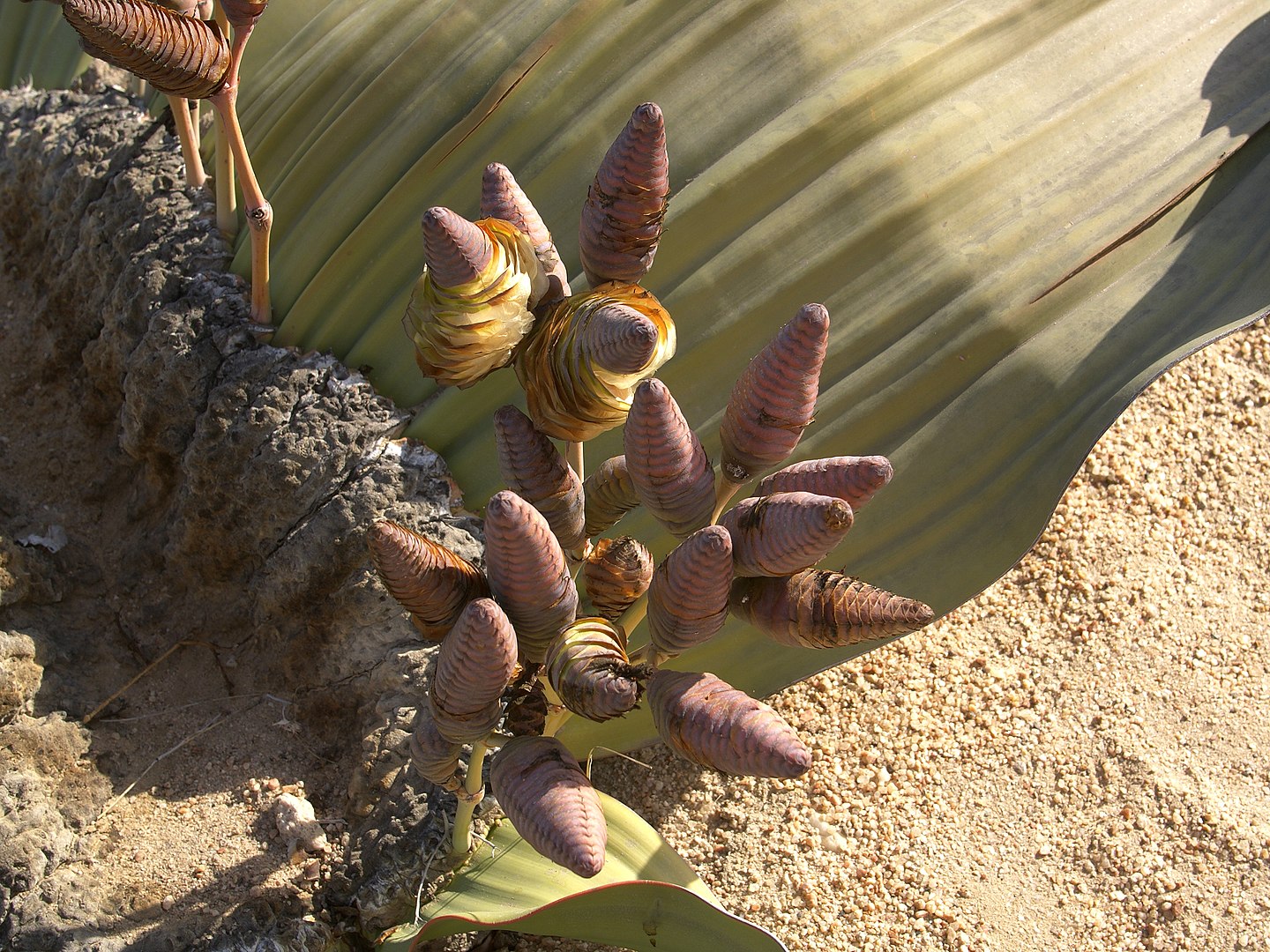How the Welwitschia mirabilis is a miraculous "living fossil"
Our “Species of the Week” series highlights the flagship species of each of the 844 unique ecoregions contained within Earth’s bioregions.
In the arid desert of Kaokoveld lies mounds of what look to be seaweed. Strips of light and dark green pile around gray decay and bright red blooming cones. This is Welwitschia mirabilis, a plant only found in this barren region that has baffled scientists with its age and size.

Welwitschia mirabilis is the flagship species of the Kaokoveld Desert ecoregion, located in the Southwest African Coastal Drylands bioregion (AT10).
Known as a “living fossil”, it is widely believed that the Welwitschia evolved around the same time as the dinosaurs, around 200 million years ago. Although no living plants have been found in Brazil, fossils have been located. This could mean that its existence predates the Atlantic Ocean when Africa and South America were still conjoined in the Mesozoic period. The leaves that sprout from the base of the plant can reach lengths up to 4 meters (13 feet), the entire circumference of the plant can exceed 8 meters (26 ft), and the height of the plant can grow as tall as 1 meter (6 feet). Scientists believe a Welwitschia that tall could be over 2,000 years old.

Image credit: Hans Hillewaert, Creative Commons
Professor J. Scott Turner from the College of Environmental Science and Forestry at the State University of New York, further points out the enigma of the Welwitschia. Typically the relationship between environment and leaf size is that the more hot and sunny a climate is, the smaller, more numerous, and more narrow the plant becomes. However, Welwitschia seems to breaks this rule. Turner explains this phenomenon known as niche construction — an organism building an environment in another environment. Highly unstudied, niche construction is a new way of thinking about adaptation and evolution. The large leaves of the Welwitschia provide an enormous amount of shade and therefore cooler temperatures inside and around the plant. For the Welwitschia, this results in higher humidity, which means less demand for water.
For other species, like flies, ants, bees, and wasps, it provides a habitat and protection from the blazing desert sun. Probergrothius angolensis, or the Welwitschia bug, is a species of true bug found only in the region as well. Fertilization of the plant is carried out by insects such as these as they move from plant to plant. Fog forming when the cold Benguela current meets the hot Namib Desert air provides the little moisture the Welwitschia needs, and in time of drought, antelopes and rhinos chew the leaves to extract the moisture and then spit out the tough fibers.
Although today the Welwitschia is not immediately threatened, its growth rates are low and the species' range covers only a single, ecologically limited, and vulnerable area. Welwitschia mirabilis is the base of the national coat of arms of Namibia.



